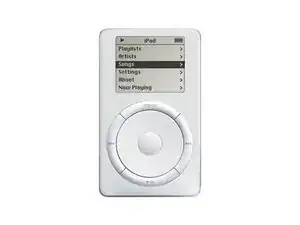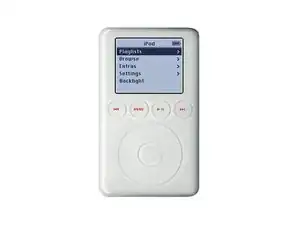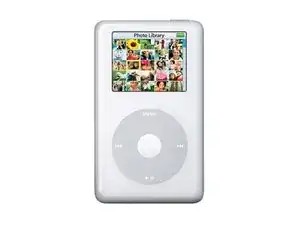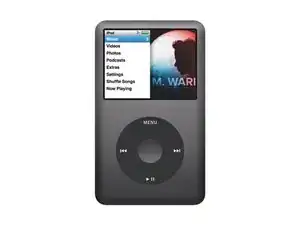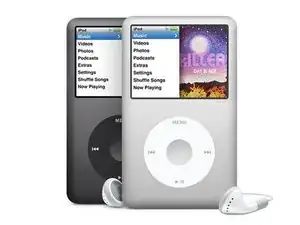Background and Identification
The iPod Classic—originally just called the iPod when it was released in October 2001—is a portable media player designed by Apple. Over the period from 2001 to 2014 when the device was discontinued, Apple released six major revisions (and a few smaller updates) to the iPod which separate the product line into six generations. Since Apple also sold other versions of the iPod during this period (such as the smaller iPod Nano), they rebranded the original iPod as the “iPod Classic.” This name change corresponded with the release of the 6th generation model in 2007.
You can identify your iPod by looking for the cosmetic differences noted below or by finding the serial number on the back of the device. You can enter this number on Apple’s warranty page to find your exact model. On the back you can also find the storage size of your iPod, which can be a useful piece of information.
The most common repairs for iPod Classics are a battery or hard drive replacement. These are the components that usually die first, but often they are the only pieces that need to be replaced to get an old iPod working like new. Most of the models are not too difficult to open except the 6th generation. (Seriously, just look at step 4 in the 6th generation opening procedure. Yeesh!) If you’re interested, you can also replace the internal hard drive on some models with flash storage which is more reliable and power efficient. There are many videos of this simple modification online, but it only works on certain versions, mainly the 3rd generation and up.
The 1st generation iPod was released in October 2001 with the slogan “1000 songs in your pocket.” This iPod has a scroll wheel with the menu, forward, back, and play buttons in a ring around its edge. Unlike all later models, the scroll wheel on this version actually rotates. It has a FireWire plug (for syncing with your computer), a headphone jack, and a hold switch on the top side.
The 2nd generation iPod was released in July 2002. This model used a touch-sensitive scroll wheel that does not actually rotate, but the buttons have the same layout as the first model. The ports on the top are the same, but the FireWire plug has a cover on the 2nd generation version.
The 3rd generation iPod was released in April 2003. In a large design change, the menu, forward, back, and play buttons are circular and located above the scroll wheel. In this generation, Apple replaced the FireWire port on the top of the iPod with a 30-pin connector on the bottom side which can utilize USB. This was the connector used on all subsequent models.
The 4th generation iPod was released in July 2004. The scroll wheel was once again changed to include the menu, forward, back, and play buttons as part of the touch-sensitive ring. This scroll wheel, with all the buttons built in, remained for all the rest of the iPod models. Apple later released a small update to the 4th generation iPod which added a color screen to the device, marking the first time this feature was available in the Classic series.
The 5th generation iPod was released in October 2005. This generation has a larger screen with the ability to play videos. It was released in both a white and black style, another first for the line as all previous models only came in white plastic.
The 6th and final generation iPod, officially called the iPod Classic, was released in 2007. It is much harder to open than the other models thanks to a new front cover design machined from anodized aluminum. This model was sold in silver and black. The iPod Classic was finally discontinued in 2014.
Additional Information
Identify your iPod model article on Apple support
iFixit iPod identification system (use this tool to find your exact model)


